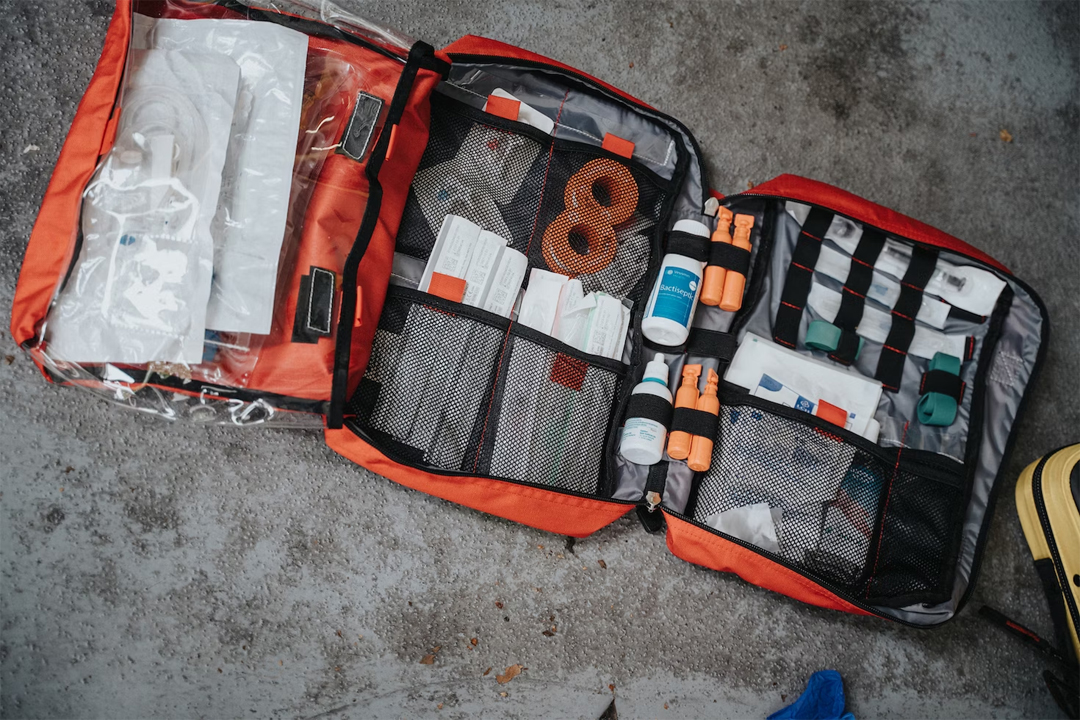
In our article below we will go through the essential items that every professional first aid kit should consist of. Keep reading to learn more
Bandages and Dressings
One of the most critical components of a first aid kit is bandages and dressings. These are used to cover wounds, stop bleeding, and prevent infection.
Your first aid kit should contain a variety of bandages, including adhesive bandages, gauze pads, and rolled gauze. Make sure to stay on top of restocking items as you use them through reliable places like eFirstAidSupplies, as it’s important to always have everything you need. That way, when you need something you don’t find yourself without it.
Antiseptic Wipes and Creams
Antiseptic wipes and creams are used to clean wounds and prevent infection. They come in different forms, including wipes, sprays, and creams. Your first aid kit should have antiseptic wipes and creams that contain alcohol, hydrogen peroxide, or iodine.
Pain Relievers
Pain relievers are essential in a first aid kit to help alleviate pain caused by injuries. Your first aid kit should include over the counter pain relievers such as aspirin, ibuprofen, or acetaminophen. Make sure you always follow the recommended dosages.
Something else you can throw in your kit just in case is anti-diarrhea medication, antacids, and allergy medicine. Also, look into having aloe vera gel, calamine lotion, laxatives, and hydrocortisone cream.
Hand Sanitizer
If you still have a bunch of hand sanitizer left over from the pandemic, you can use it in your first aid kit. Before you start tending to an injury, it is a smart move to first sanitize your hands if there is no water and soap readily available. Also, use it after you are done tending to an injury. You always want to make sure your hands are clean and sanitized to prevent bacteria from spreading. Even when you are just putting on a bandage you want to make sure your hands are clean.
Emergency Phone Numbers
Your kit needs to have emergency phone numbers as well, like the local emergency services, emergency road service providers, and the poison helpline. Keep in mind that the Poison Control helpline in the United States is available 24/7 and it is completely free and confidential to get help. Also, include the phone number of the closest hospital in town.
CPR Mask
A CPR mask is an essential item in a professional first aid kit. It is used to protect both the person performing CPR and the person receiving it. A CPR mask provides a barrier between the two and prevents the spread of disease.
Scissors, Tweezers, Pins
Cold Pack and Emergency Blanket
An instant cold pack is used to reduce swelling and pain caused by injuries. These packs are activated by squeezing or shaking them, and they can provide instant relief.
An emergency blanket is a lightweight, space-saving blanket that can be used to keep someone warm in case of an emergency. It can also be used to provide shade or protect against rain.
Other Household Items
There are a few other things you want to have handy such as face masks, a flashlight, cotton balls, swabs, disposable gloves, a thermometer, and a lubricant like petroleum jelly. You might never need to use any of these, but they are better to have just in case.
You also want to have insect repellant, waterproof matches, a headlamp, extra batteries, a waterproof flashlight, and a small notepad with a waterproof writing instrument.
Workplace Hazards
Please keep in mind that all of the items above are the most commonly needed in first aid emergencies. You want to evaluate what your workplace needs because there might be more specialized tools and equipment needed in your place of business. For example, if there are dangerous chemicals that employees deal with on a daily basis then you will need to also have an eye wash station.
Also, take into consideration having your employees go through hazmat training if they are working with dangerous gases or chemicals. You also need to make sure you have the right supplies if you have heavy equipment and heavy machinery in case of an accident. For example, you need to have extra bandages, hemostatic dressings, and tourniquets, so that you and your office are prepared for all emergencies.
Distilled water is another great idea to add to your kit. Distilled water helps clean wounds, and it also helps flush out chemicals from the skin and eyes.
Where to Place Your First Aid Kit
The more readily accessible your kit is, the better. If not, you and your employees might waste precious time searching for a kit during an emergency. Consider mounting the kit in the employee break room, a common hallway, or any central location where anyone can quickly reach it.
Take a look at the layout of your office when you are deciding the best place to put the first aid kit.
Time to Check Your First Aid Kit
Now that you are aware of what your professional first aid kit should have, it is time to go through your current kit and make sure everything on our list above is in there. If you don’t have a first aid kit together yet, then it is time to gather everything we recommended and get your kit in order.
Please keep in mind to regularly check for expired and used items to ensure that your kit is up-to-date and effective. If this article came in handy feel free to keep browsing the rest of this section for our latest guides.
Comments
comments